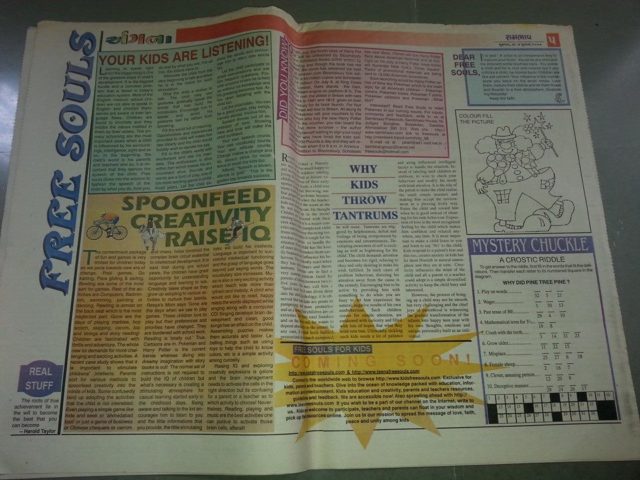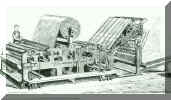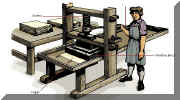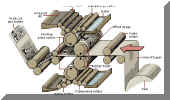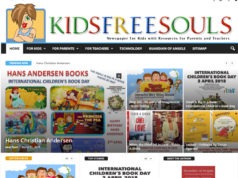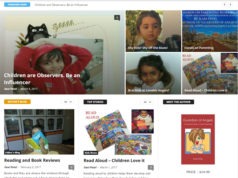Newspapers, publications are usually issued on a daily or weekly basis and their main function is to report the news from North, East, West & South from all over the world. . Newspapers also provide commentary on the news, advocate various public policies, furnish special information and advice to readers, and sometimes include features such as comic strips, cartoons, and serialized books. Newspapers are daily, weekly, tri-bi-weekly, morning, evening or mid-day news and so on. Despite the development of motion pictures early in the 20th century, of radio broadcasting in the 1920s, and of television in the 1940s, newspapers remain a major source of information on matters ranging from details of important news events of human-interest. The recent figures speak of total numbers of Newspapers stand at 25,536 or more, maximum numbers (3564 plus) from Uttar Pradesh and lowest published from Dadra Nagar Haveli. Ranking languages in order are Hindi, English, Bengali and Urdu.
Early newspapers were small in size, usually consisting of only one page. They had neither headlines nor advertising and looked more like newsletters than today’s broadsheet papers with their bold headlines and numerous pictures. As time passed, newspapers began to compete more and more with one another to increase circulation in order to obtain more advertising, also a different type of journalism was developed, transforming newspapers with sensational and scandalous news coverage, the use of drawings, and the inclusion of more features such as comic strips. Technological advances helped to encourage the growth of newspapers. The development of the first Linotype machine in the mid-1880s speeded up typesetting by making possible the automatic casting of type in lines. Rotary presses were also improved, and newspaper circulation in large cities climbed into the hundreds of thousands.
Developments in paper, presses, engraving, and electronic, computer-assisted typesetting have all improved the quality of newspapers. Another 20th-century trend was the development of tabloid newspapers. The tabloid differs from the standard paper in its size, the depth of its news coverage, and the number of illustrations; the tabloid is usually about half the size of a standard paper, reports news in more condensed or shortened versions, and offers many more illustrations. Coverage of City happenings, relating to children, women, cookery, general & interesting features were made in tabloids.
Newspapers have specialized staffs. In addition to a news staff of hundreds of reporters and editors, the bigger papers also have sizable staffs in their advertising, circulation, and production departments. The publisher oversees all the operations, usually with the aid of an executive editor in charge of the news department, an editorial-page editor who supervises the commentary pages, and a business manager responsible for advertising, circulation, and production of the newspaper. For a typical large paper, the main news staff is located on one huge, unpartitioned floor of the newspaper plant. The staff usually includes “metro” or local reporters, photographers, artists, and editors who cover news of report and edit national news and foreign news. Additional staff members are concerned with business news, sports, and cultural events. Overseeing these editors and reporters are the executive editor, a managing editor that handles the day-to-day operations of the news staff, and various assistant managing editors. Some reporters cover the city news, the the city and suburban areas under the direction of the metropolitan editor. Other groups police department, or the courts; some are general-assignment reporters covering a variety of news events; still others are primarily investigative reporters often involved with stories about corruption in government, business, or labor. Many reporters cover only daily events—meetings of a city council, press conferences, fires, and accidents—while others work for weeks to develop in-depth articles.
Each day a newspaper’s editors decide what news and features to use. Because of space limitations, they generally select only those stories dealing with the most interesting and important events and developments. Reporters on large papers write their own stories on computerized electronic typewriters that display the articles on video terminals at their desks. Copy editors, who also write the headlines, then edit the stories.
Layout editors of pages on which space has been blocked out for the day’s advertising determine placement of articles and illustrations. Features such as crossword puzzles etc. are run every day in approximately the same place in the paper.
There are also four News Agencies that operate to provide news which are (a) Press Trust of India (b) United news of India (c) Samachar Bharati (d) Hindustan samachar The first two supply news in English whereas the other in Hindi and other languages.
The biggest cost in the publication of large papers is newsprint, which amounts to about one-third of the total budget. The major income comes from the source of Advertisements.
Newspaper publishers have now plunged online with the use of computers and television to transmit news, advertising, and other information directly into homes. Some people believe that the newspaper of the future will not be printed but will be an electronic information service instantly available in every home.Many Newspapers are already being surfed on the Internet – SAMBHAAV, being the first Gujarati Daily to be on the Internet with a million of Readers from all over the world visiting the site in 1997-2004 when I was Editor Online for Sambhaav. Virginia, USA Readers top the rank of readers online with Chinese, Korean Language sites also, sending their traffic to Sambhaav. The Sambhaav Supplements Kidsfreesouls is now an Independent Net Newspaper online with Freesouls ‘Another Newspaper online’ providing Information, Education, Entertainment. The Asian Age is an International Newspaper which is widely read apart from newspapers like New York Times, Times of India, many more now as years roll by….
The Print Story of the Newspapers
Perfecting Printing press
Continuous roll or Perfecting Printing press can create thousands of double sided impressions in an hour. The press pass a paper from the huge roll through a set of revolving cylinders, then set it over a special cutter generating large sheets that could be folded into newspapers. In 1871, American Richard March Hoe perfected the continuous roll press that produced 18000 newspapers in an hour.
Mass publication and circulation of literature was possible when invention of Printing Press was made by Johann Gutesburg in 1480. An operator worked a lever to increase or decrease the pressure of block against paper with the use of olive oil, first print press and heavy screw to force a printing block against paper below. However, only 250 one sided paper prints could be produced.
The Chinese translation of Diamond Sutra as Buddhist text was first printed in carved wood blocks in AD 868 – Earliest Printed Book
Chinese translation of Diamond Sutra
Offset Printing press
Modern Printing techniques uses advance technology to rapidly produce copies of originals. After the staff generates master copy of paper, each page is photographically transferred to plastic coated zinc or alluminium printing plates. Covered in ink, these plates then transfer their images onto paper in printing press. The printing press contains cylinders that rapidly rotate continuous webs of paper while printing with use of quick drying ink. Multi colours are printed in one pass. Process colour printing uses four transparent ink – cyan, magenta, yellow and black. Computers today, can generate images for printing reducing time and expense required to produce printing surfaces for all major processes. Computers are routinely used to create artwork, typeset, scan and retouch photographs and merge all these elements together on a single piece of film or directly on the printing plate.
Wanna Be a Voluntary Freelance Writer?
Here is your chance to be a Voluntary ‘Freelance Writer’ for Free Souls Online & Kids Freesouls – Free Exposure! Send your entries along with your Name, Address, Telephone number and Age (Qualifications not required here) You can be a Newbie writer, child or a Teenage or a Young writer or a Doctor, Lawyer, CA, Educationist, Professional, Businessperson, Industrialist, or a Politician too:-) Just Enhance your Writing Skills. Heyyy! It’s Voluntary Freelancing and you don’t Get paid! Be a Guest Blogger. All Rights Reserved Kidsfreesouls.


